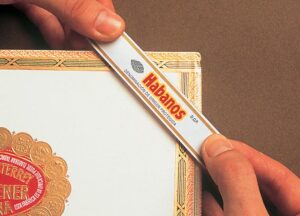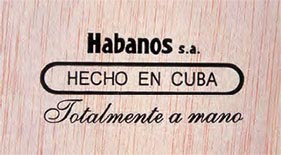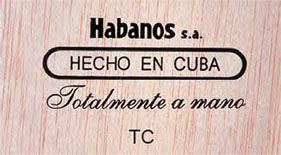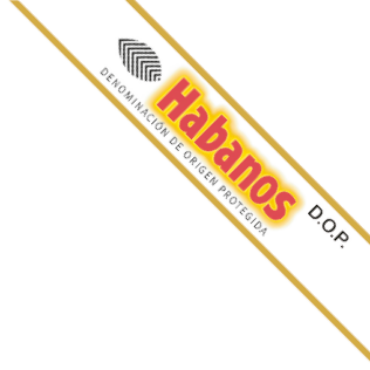Marks of Distinction
When you have a reputation like Habanos, it is no surprise that unscrupulous persons will try to pass off their product as yours.
Here are the authenticating marks that you should look for when buying Habanos. It’s also important always to buy your cigars at authorized shops.
The Cuban Government warranty seal
The warranty seal was first introduced in 1889 by Royal Decree of the King of Spain. Then in 1912 the independent Cuban Government passed a law authorising the use of a new design, which is similar to the one in use today. It was modified slightly in 1931 and more radically in 1999 with the addition of the red serial number and an emblem that is visible only under ultra-violet light.
Most recently, in 2009, a new version was introduced with a hologram on each seal as well as an individual bar code that tracks every box of Habanos from production to each Habanos s.a. exclusive distributor anywhere in the world. The bar code allows you to find out if a box is genuine by using the Authenticity Check you will find on Habanos s.a.’s website at http://verificacion.habanos.com/

Denomination of origin
Since 1994 all boxes have carried the Habanos seal as a mark of the cigars’ denomination of origin. No box of Habanos is shipped from Cuba without it.

Local importers’ stamps
Individual countries or regions have their own certifying marks as an extra, local defence against counterfeiting. These marks are the responsibility of the local exclusive distributors. For more information about the stamp in the market where you are ask your local authorised Habanos Specialist.
On the bottom of the box
Since 1960, the bottoms of all Habano boxes have been hot-stamped with the words ‘Hecho en Cuba’. Before that time, it was often written in English (‘Made in Cuba’). Since 1994, the bottoms of the boxes have also been hot-stamped with ‘Habanos s.a.’, the name of the company that distributes Habanos worldwide. From 1985 to 1994, the name was ‘Cubatabaco’. Nowadays they are marked as shown below:

Totalmente a Mano – Tripa Larga
Since 1989 boxes of classic, Tripa Larga – long-filler – Habanos have been hot-stamped with the words Totalmente a Mano –Totally by hand’–.

Totalmente a Mano – Tripa Corta
Boxes of short-filler Habanos are also hot-stamped with the words Totalmente a Mano – Totally by hand – and since 2002 ink stamped with the letters TC (Tripa Corta – ‘Short Filler’).
Factory code and box date
There are two ink-stamps on the bottoms of Habanos boxes. One is a secret code that tells the industry which factory made the cigars. The other is the month and year when they were boxed.
The dates are not in code and the year is simple enough. The system started in 2000 with ‘00’, then ‘01’ and so on. However, unless you know a little Spanish, the months may need deciphering.
They are:
ENE (Enero) January
FEB (Febrero) February
MAR (Marzo) March
ABR (Abril) April
MAY (Mayo) May
JUN (Junio) June
JUL (Julio) July
AGO (Agosto) August
SEP (Septiembre) September
OCT (Octubre) October
NOV (Noviembre) November
DIC (Diciembre) December
Habanos improve with age, so the date is important to connoisseurs.


